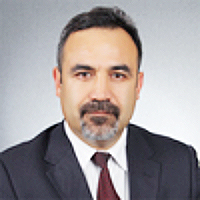About Curtin University
Curtin University
Articles by Curtin University
Factors of the grandparent conditions to take care of a child born accidentally in environmental health through their raising sexuality adolescence behaviours toward their abusing and neglecting from teenage parents
Published on: 10th September, 2021
OCLC Number/Unique Identifier: 9252207194
According to raising teenage parents though their abusing and neglecting children at a rural community with the ethnographic qualitative research method was surveyed. All children have protected on violence, abuse, neglect and exploitation from their teenage parents. To investigate and emphasize the consequences of violence ranged from immediate to the impact of their development on physical injury, learning ability, and local child care performance to long-term harm that caregivers carry into adult life is affected for raising children. Administration to the 89-households’ families and household memberships, 10 house stakeholders, 8 community leaders, 36 children, 65 caregivers, teenage parents and grandparents, and 3 mentors. Using the ethnographic qualitative research participatory with observation, natural conversation and in-depth interviews were randomized in rural Northeastern Region, Thailand. There are 52% of children being sexually, physically, or psychologically abused, neglected per day. Most of the teenagers’ education is poor learning skills, low academic learning achievements, and independent freedom of their sexual behaviors. These sexual intercourses between their groups are normal. Adding gambling habits among friends and adult groups are amputated without parents to dissuade. Either lifestyles as freely with sexually and gambling and the basic education are stopped, experiences’ living skills are poorly. Teenage women are changed to pregnant and young mothers. The teenage men must be searched for the job without a lack of worker’s skills to look for children with whom they are conflicted family relationships to take care.
Developmentally appropriate practices on knowledge skills for contributing child’s intelligences of receptive language skills in appropriate and inappropriate early childhoods
Published on: 10th September, 2021
OCLC Number/Unique Identifier: 9252226608
To investigate the variables correlation analysis research method for assessing the caregivers’ perceptions in two groups including dependent and independent variables to correlate the measuring of early childhoods. Typically, in correlated data, for jointly normally distributed data with relevant outliers that can use a correlation as a measure of a monotonic association. Designing the 65-paired samples for the Thai Model of early detection and intervention of children as the health care system guidelines from 26-CUPs have compared. Using the DSPM divided into 65-appropriate and 65-inappropriate development early childhoods for every 13 CUPS that depends on talented children. Selecting the Receptive Language (RL) skills identified in contributing growth relative factors with four research instruments: the EPRLS, PRLF, CNRLF, and CMRLF are valid and reliable significantly. Comparisons of the appropriate and inappropriate early childhoods are differences ( < .05), the intercorrelation circumflex nature analysis (p < .05), positively. The R2 values show that 26% and 55% of the variance in training caregivers’ factor skills on the PRLF, CNRLF, and CMRLF to the EPRLS in inappropriate and appropriate early childhoods, respectively. Developmentally Appropriate Practice is a perspective in a child’s development: social, emotional, physical, and cognitive-based on the child’s cultural background: community, family history, and family structure.
Associated indicator factors among inappropriate malfunctions’ development for the 9-month-old-baby
Published on: 10th September, 2021
OCLC Number/Unique Identifier: 9252205593
To investigate the associated an inappropriate development of the 9-month-old-baby with the Matched Case-Control Study on five categories and three factors including predisposing, contributing, and complementary through the babies’ malfunction development with the Analysis Research Method was analyzed. The babies’ developing crisis was enhanced as the guidelines for promoting healthy babies’ development via the DSPM in the future of Thailand. Creative the Interview Factor Questionnaire analyzed the 130-child caregivers’ parenting matching 65-pairs-case-control group into 5 parts: the Predisposing Factor Questionnaire, the Positive Interview Form; the Baby-Self-Efficacy Form; the Inappropriate Contributing Interview Form; the Inappropriate Development Interview Form for assessing the motor skills, self-efficacy, predisposing, contributing, and complementary factors of the 9-month-old-baby, respectively. Highest, Middle, and Lowest means levels are indicated. The child caregivers’ are presenting responses, overall on the Predisposing Factor Questionnaire on five categories’ motor skills, and the Inappropriate Development Interview Form showed off at the Middle Levels. The Positive Interview Form, the Baby-Self-Efficacy Form, and the Inappropriate Contributing Interview Form comprised at the Highest Levels for the predisposing, self-efficacy, and contributing factors for developing the 9-month-old-baby, respectively. To help professionals assess the factors affecting a child’s development into environmental factors, biological factors, interpersonal relationships, and early environments and experiences that identified in contributing to growth, brain, emotional, social developments at early childhood are the GM, FM, RL, EL, and PS motor skills practices with the DSPM for Thai’s children are also more likely to have health problems all child ages with the knowledge and skills.
Identity-related attitude in the child development centres for protecting educational asylum of early childhoods: From rural communities to schooling cities
Published on: 13th September, 2021
OCLC Number/Unique Identifier: 9252227524
The global identities of parents’ popularity in rural communities to make-decision effects of their attitudes to transfer their Early Childhood from Child Development Centres and Local Primary School for moving study into the schooling cities that looks like children’ asylum of their educational conditions, problems, administration’ school directors, teachers, and schools’ environments to protect that described. The involving CDCs’ perceptions got using the 25-item My CDC Identity Inventory (MCDCII) in five scales, three options. Teacher and Caregiver-Early Childhood interactions have assessed with the 30-item Questionnaires on Teacher Identity Interaction (QTII) in five scales on five options. The 10-item Local Identity-Related Attitude (LIRA) has been associated with a sample of 300 children’s parents, teachers, and caregivers. The determination of efficient predictive value (R2) shows that 30% of accepted the identities on cohesiveness, competitiveness, physical indoor and outdoor environmental development, satisfaction, and strong-sense identity. 74% of their CDCs can protect the educational asylum of early childhoods from rural communities. The R2 value shows 49% of the variance in children’s parents’ perceptions was because of the MCDCII have associated. Despite Thailand’s success in expanding educational access, new empirical evidence suggests that much more needs to be done to maximize the potential of its students. The performance gaps among schools have disadvantaged and poorer-performing students have concentrated in small rural village schools. The Thai pre-primary school system is dramatically lacking in qualified the CDCs’ learning environments and achievements, and teachers. It allocated small rural schools teachers with lower qualifications and teaching experience.
Effects of food programme for enhancing obesity children healthy of their abilities and expectations to self-efficacy for preventing early childhood
Published on: 13th September, 2021
OCLC Number/Unique Identifier: 9252205670
This study aims to assess parents’ perceptions of their responses to the perceived awareness programme competency abilities and expectations for enhancing parents on weight control of their pre-school children in preventing with Obesity. It has defined self-efficacy as one’s belief in one’s ability to succeed in specific situations and accomplish a task with the theoretical framework of Bandura’s Model by quasi-experimental research in 16 weeks. To promote the self-efficacy and expectations, the 10-item Questionnaire on Self-Efficacy Program, the 22-item Questionnaire on Parents’ Efficacy Interaction, and the 46-item Questionnaire on Parental Expectations assessed parents’ perceptions. A sample size consisted of 14-pre-school children whose age ranged 2-5 years old at the Child Development Demonstration Centre, Khon Kaen University was selected. Providing knowledge, teaching, demonstration, experimentation, and organized activities were organized. Parents’ perceptions of their abilities for controlling children’s weight and height with pre- and post-experimental programmes differentiated, significantly. Parents’ responses to the post performances are over than pre-experiment for the QSEP, the QPEA, and the QPE, differently. They answered and followed up on child management with parents online for 16 weeks, continuously. The obese early childhood at the CDC Demonstration Centre, Faculty of Nursing used the food programme to self-efficacy with their parents taking part and cooperating well in specifying research objectives. There are 2,958,441 children in rural areas are lacking attention, because of food and health problems in the 19,171-Child Development Centres none yet have food programmes to prevent health and hygiene problems. Although Thailand took the next leap forward for its investment in Early Childhood Development through legislation, improved quality services, and social transfer grants for families with young children since 2018.
Shoulder recovery for head and neck cancer patients after unilateral neck dissection: a pilot exploratory study
Published on: 28th September, 2022
An established side-effect of neck dissection (ND) for head and neck (HNC) tumour management includes shoulder dysfunction (SD), which can impact quality of life (QOL). Shoulder strength and range of movement (ROM) are key parameters to be monitored in SD. However, such evaluations are not routinely conducted in the clinical setting. The aim of this study was to evaluate objectively the impact of ND on shoulder functions. Methods: This is a pilot exploratory study in a tertiary cancer centre. Five participants with unilateral ND and advanced HNC, completed the study. Outcome measures consisted of self-reported QOL questionnaires, C2–T1 dermatomes and shoulder ROM and strength testing. Data was collected at baseline, 1.5-months after surgery and 6-months after diagnosis (after adjuvant treatment completion). Results: Most outcome measures on the surgically affected side were negatively impacted post-operatively, with varied recovery seen at follow-up. Sensory loss was noted at C3–4 dermatome levels. Shoulder ROM and strength was reduced on the surficial side for all participants, with some recovery after six months except for two participants.Conclusion: Results of SD after ND are diverse and unique to each patient. Findings from this pilot study indicate that regular rehabilitation/exercise may facilitate recovery of shoulder function post HNC surgery. However, customised rehabilitation may yield better outcomes. Future studies with a larger sample are indicated to validate the findings of this study.

If you are already a member of our network and need to keep track of any developments regarding a question you have already submitted, click "take me to my Query."
















































































































































